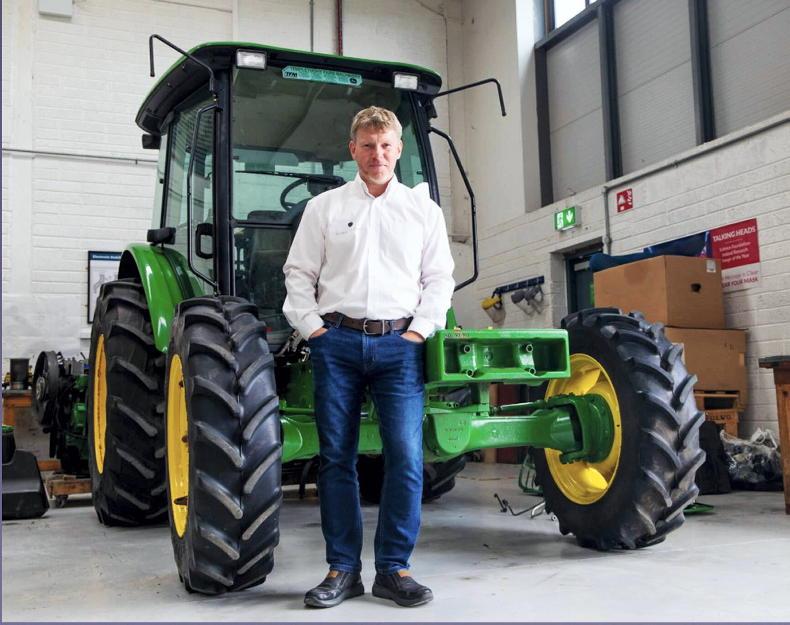I had certain criteria when looking for a replacement for our New Holland combine. I’ve always had this thing about tracks – not as in tracks and trails, think Caterpillar.
Never able to justify a tracked tractor, I bought a recreational vintage Fowler tracked tractor years ago. I sit up on her and daydream when I’ve nothing better to do. And I don’t like admitting it as it’s very anoraky, but I have a collection of toy tracked tractors that I keep quiet about.
Tracks offer both greatly increased traction and reduced ground pressure over tyres. A tracked combine reduces compaction by 65%.
This means that a large tracked New Holland 9080 combine weighing perhaps 30t laden should only damage the field as much as did our old 1976 10ft New Holland 1540S.
No-brainer
Now I still got stuck with the 1540S in 1985, but you know what I mean. But tracks are a no-brainer, be it on big tractors, combines or root harvesters.
And all the more so for someone like me who’s paranoid about compaction. It’s not only because we are min-tilling, I just hate voluntary compaction. It’s a firing offence in my book if the grain trailers wander off the tramlines.
So when it came to changing our 12-year-old combine, it really had to be a tracked combine or, at the very least, one with tyres so wide that Bord na Móna would have their tongue hanging out. Which is fine on an Offaly bog, but awkward with field gates. We do little road work, but overall width is still an issue.
However, new tracked combines are big and very expensive and unjustifiable on our acreage. That firmly ruled out a new one and so the number one requirement in a replacement combine would have to be met with a good second-hand model.
The second criteria is related to the first.
A wide header is very desirable to reduce the amount of passes in the field. Going from a 17ft cut to a 25ft cut reduces the combine passes by a colossal 50%.
While controlled traffic farming (CTF) is very much the ideal, it’s not possible at our relatively narrow drill width of 4m.
But with every machine, the wider the better. Your precious earthworms and literally billions of micro flora and fauna will thank you for it.
And not only that; compaction costs you money as well. Everything you can do to minimise compaction is rewarded. Tracks and a wide header were two essential criteria in a replacement combine.
Maker
The third selection criteria is the maker. We’ve had an orange Fahr combine (awful), two Case combines (one a star, one a disaster, so that’s a no) and two New Hollands (both brilliant, definite yes). I’ve always liked New Hollands, but we mustn’t forget the four green machines, namely Claas, Fendt, Deutz-Fahr and John Deere. I’d possibly entertain a Claas and certainly a Fendt, but the latter two have zero appeal to me.
That said, my ideal machine would be a tracked 25ft New Holland. But such a second-hand machine is incredibly rare and you’d be better buying lotto tickets.
So I’ve decided to go with the wisdom of Meat Loaf, who sings “two out of three ain’t bad”. I’ve opted for a tracked 25ft 2012 Claas 670, which ticks two out of the three boxes. She’s a cracker to look at. But looks aren’t everything…










SHARING OPTIONS